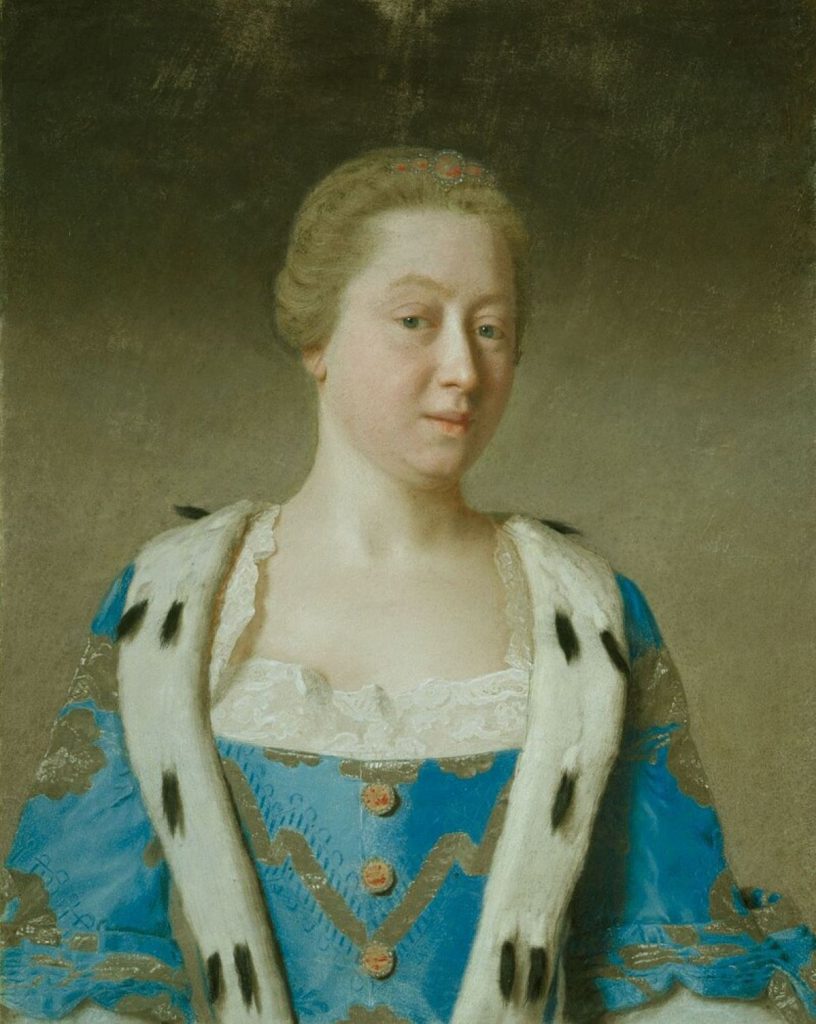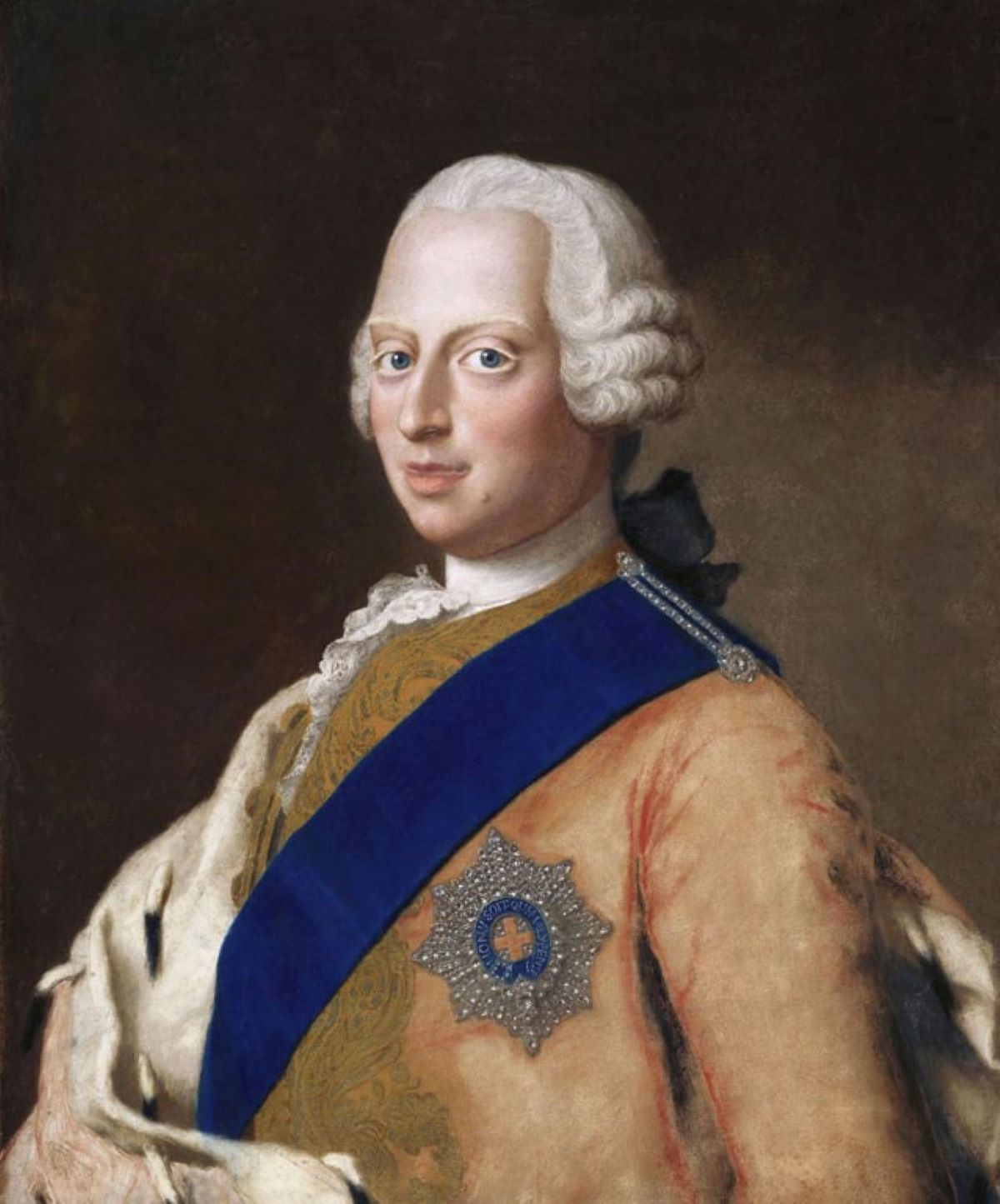Here lies poor Fred who was alive and is dead,
Had it been his father I had much rather,
Had it been the whole generation, so much better for the nation,
But since it is Fred who was alive and is dead,
There is no more to be said!”
Frederick Louis, Prince of Wales was the eldest son of King George II and Queen Caroline. His acrimonious relationship with his parents made headlines in Georgian Britain. He was the last Prince of Wales to not become the monarch.
He was refused permission to see his dying mother in 1737. Caroline referred to him in far from loving terms, for example, “My God,… popularity always makes me sick, but Fretz’s popularity makes me vomit.” (Fretz was his name within the family). George insisted that Frederick was a wechselbag, a changeling and not his son.
A 29 year old Frederick married 17 year old Princess Augusta of Saxe-Gotha-Altenburg at the Chapel Royal, St. James’ Palace on 27th April 1736. She spoke no English and she hugged a doll throughout. Nine children, including the future King George III followed.
On 31st March 1751 Augusta, Princess of Wales sat by Frederick’s bedside as he appeared to suffer from a chill that he caught while playing his beloved cricket or possibly real tennis, the original form of tennis.

Augusta, Princess of Wales, 1754. Image: Wikipedia/Public Domain.
Did the Prince of Wales Die From Pleurisy, Pneumonia, an Embolism or a Blow?
It was common practice during the Georgian era to bleed a patient with leeches to emit any poisons. After this treatment Frederick appeared stronger for a short time before his condition deteriorated. The chill became suspected pleurisy; sufferers experience inflammation around the lungs and breathing becomes painful and laboured. Later physicians have suggested that Frederick was actually enduring a pulmonary embolism, a blocked artery or pneumonia. The symptoms are similar.
During his final moments Frederick coughed repeatedly and he somehow spat out the words “Je sens la mort.” (“I feel death.”)
In the few seconds that it took Princess Augusta to stand, take hold of a candle and charge from the foot to the head of the bed, Frederick stopped breathing. He was 44 years old. The loss of the Prince of Wales was an enormous shock to the country.
Augusta and the children were devastated; the future King George III was heard to say, “‘I feel something here” as he placed his hand on his heart.
A post mortem concluded that the cause of death was suffocation after an abscess on his lung broke. Legend has it that Frederick was hit on the chest by a ball while engaged in real tennis or cricket and the resulting abscess was not discovered until after his death.
King George II’s Reaction To Frederick’s Death
George II received the news of his eldest son’s death as he played cards. He gave the impression of being genuinely stricken and pale faced, he sought the company of his mistress Amalie von Wallmoden, Countess of Yarmouth. He lamented “Il est mort!” and commented later that, “I lost my eldest son – but I am glad of it… I did not love my children when they were young…but now I love them as well as most fathers.”
Mourning Frederick, Prince of Wales
Six months of court mourning followed Frederick’s untimely death. The London Gazette recorded in issue 9043 that “The Lord Marshals Order for a General Mourning for his late Royal Highness Frederick Prince of Wales…That it is expected that all Persons, upon the present Occasion of the Death…do put themselves in to the deepest Mourning.”

Frederick’s Funeral: No Royals In Attendance
Frederick, Prince of Wales’ funeral was held on 13th April 1751 at Westminster Abbey in a quiet service that no royals attended. Courtiers represented them. During the Georgian era women were not expected to attend the service but George II’s absence was seen as the final insult to a son that he cared little for.
His body was placed in the Hanoverian vault below the Henry VII chapel in the abbey. His mother already lay there and his father, wife and children would come to rest there as time passed.
George II tried to console Princess Augusta but she was suspicious about his focus on George, her eldest son and his new heir, after years of being highly disinterested. She feared that the king would take George away from her. He didn’t. Instead, the king drew up a new will and an Act of Regency that left Augusta and his favourite son William, Duke of Cumberland as the regents of Britain and Hanover if he died before Prince George reached maturity.
Today, Frederick Louis, Prince of Wales is barely remembered.



